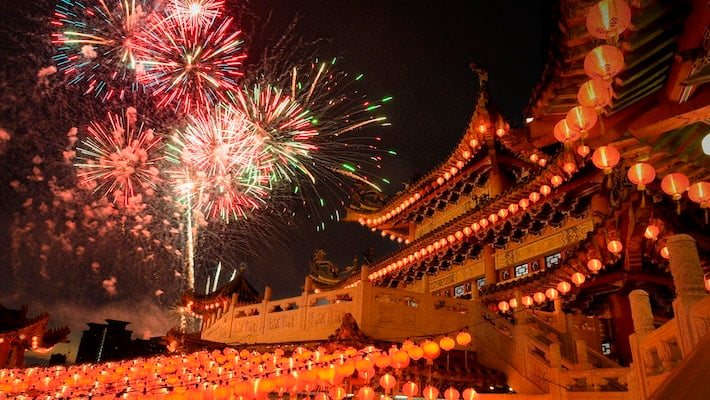
On December 4, 2024, at the 19th session of the UNESCO Intergovernmental Committee for the Safeguarding of the Intangible Cultural Heritage, "Chinese New Year - the social customs of the Chinese people celebrating the Traditional New Year" was included in the Representative list of the intangible Cultural Heritage of humanity. So far, China has 44 items inscribed on UNESCO's intangible Cultural Heritage list, continuing to be the most inscribed country in the world.
As the most important traditional festival in China, Chinese New Year embodies the Chinese people's feelings of kinship and family. The worship of ancestors, the love and care for elders and younger generations, and the congratulations and blessings to relatives and neighbors all demonstrate the deep and genuine feelings of the Chinese people. On the eve of Chinese New Year, it seems to be an instinct of the Chinese people for the Chinese wanderers who are thousands of miles away to work hard and brave the wind and snow to rush home for family reunion. Chinese New Year is the sustenance of the Chinese people's feelings of home and country. Whether in a foreign country or at home, the Chinese people will always miss their hometown and care about the fate and future of the country. At the meeting, the Chinese delegation said that Chinese New Year embodies the Chinese people's hope for a better life and reflects the value concept of harmonious coexistence between man and nature and harmonious coexistence between people. Passed on from generation to generation, the heritage project gives lasting spiritual strength to people's pursuit of a better life, and promotes exchanges and integration among civilizations on the world stage.
The "circle of friends" of the Chinese New Year is constantly expanding, which carries on the traditional Chinese cultural concept of peace, harmony and harmony. With the expansion of overseas dissemination, Chinese New Year has become a universally accepted, recognized and appreciated symbol of Chinese culture in the world. According to rough estimates, Chinese New Year has become a public holiday in nearly 20 countries, and about one-fifth of the population celebrates Chinese New Year in one way or another. From the east to the west, from the northern hemisphere to the southern hemisphere, countries around the world light up the "Chinese red", share the festive atmosphere and experience the colorful Chinese culture. During Chinese New Year, iconic buildings such as the Empire State Building in New York, the giant Ferris wheel "London Eye" in London, the Trinity Bridge in St. Petersburg, Russia, and the Tokyo Tower in Japan will also change into "Chinese red" holiday lights to highlight the festive atmosphere.
Not only that, the activities of celebrating Chinese New Year are more colorful. The Chinatown in Sydney, Australia, is bustling with celebrations, with people watching lion dances, eating food and shopping for the New Year. An 18-meter-long golden dragon from Chongqing, China, dances along the River Thames during a New Year parade in London, England.
In addition to Chinese New Year, there are many successful projects in China, covering cultural heritage, natural heritage, cultural and natural heritage and other types, which benefit from its long history and good inheritance of traditional culture. Whether it is the engraving printing technique with a history of more than 1,300 years, the guqin art with a history of more than 3,000 years, or the 24 solar terms, calligraphy, seal cutting, etc., these intangible cultural heritages have been passed down through the ages.
In recent years, China has also achieved remarkable results in the protection of intangible cultural heritage. The country has not only formulated relevant laws and regulations, but also set up a special protection fund. Since 2005, China has carried out a survey of intangible cultural heritage and established a list of intangible cultural heritage to ensure the accuracy and completeness of intangible cultural heritage data. In addition, the country also focuses on training inheritors and promoting the creative and innovative development of intangible cultural heritage. At the same time, the country is also making efforts to promote international exchanges and cooperation on intangible cultural heritage, holding exhibitions, performances, forums and other forms to let us better understand the charm and value of China's intangible cultural heritage. In 2005, for the first time, China and Mongolia jointly applied for the intangible heritage project of "Mongolian Chieftain Folk Songs". In 2020, China and Malaysia jointly applied for the "King Ship" intangible cultural heritage project, and have been at the forefront of promoting international cooperation to protect intangible cultural heritage.
As we all know, today's world is an era of multi-cultural integration. The successful application of Chinese New Year will serve as a bridge of cultural exchange and allow us to better understand China. At the event, the audience rang out warm applause, and representatives from many countries came to congratulate the Chinese representative, which shows their love and recognition of Chinese culture. Chinese New Year will not only enhance the exchanges between different cultures, but also bring new opportunities for the development of cultural industries. It is hoped that more and more intangible cultural heritage around the world will be protected, cultural industries will add more highlights to economic development, and the world will be more diverse and harmonious.